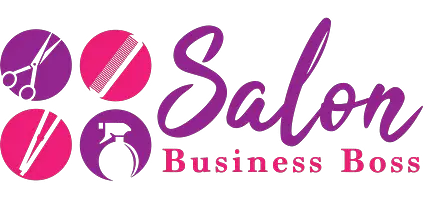Setting pricing for your salon services can be a tricky road to navigate. Most salon owners think that if they set prices too high, they won’t have any customers. Alternatively, if they set them too low they won’t be making enough money to stay afloat.
There is a whole psychology behind pricing that seems counterintuitive to most people. Sometimes a high price will signal to a customer that you offer exceptional service, while a low price indicates poor quality which might turn the customer away.
To set your salon prices so you will have plenty of customers and income, consider these factors:
- How much you need and want to make
- Salon positioning
- Competitions pricing
- Services offered
- Customer loyalty
- Pricing structure
- Pricing strategies
How much you need and want to make
Before you get into all the different factors that will affect what you can charge customers, you need to understand what prices you need to charge to keep your business running. After that, you should look at what prices would bump you up to a comfortable living and a thriving business.
When you analyze these two price points, it will give you a range to which you can set your prices. Other factors will affect your income, such as how many customers you have and your expenses, but this will be a good starting point.
For example:
To cover your expenses, pay yourself and your employees, and have some cash leftover, you need to bring in $100,000 in revenue for the year.
Yearly revenue goal: $100,000
Monthly revenue goal: $8,333
Weekly revenue goal: $1,923
Daily revenue goal: $274 (if you’re open 7 days a week)
When you break it down like this it becomes much more manageable to calculate what your prices need to be. Let’s say you see an average of 10 customers per day. You would need to charge each customer $28 to reach your goals.
Every customer will spend a different amount, and every day isn’t going to neatly come out to 10 customers and $280 in revenue, but this gives you a measuring stick so you can adjust your pricing as needed.
For more information about how much an owner will make, check out our article HERE!
Salon positioning

One of the biggest factors when it comes to what prices you can charge is how your salon is positioned in your local market. Are you a high-end salon? The new, hip salon? Or the discount salon?
While it is more desirable to be a premium salon so you can charge more for your services, a discount salon can still be profitable. A high-end salon has higher expenses and has customers that demand the best service or they will take their business elsewhere.
Make sure you have a solid understanding of where your salon fits into the marketplace to help you set the right prices.
Competitions pricing
Another great way to get a good range of where your pricing needs to be is to look at your competition’s pricing. It is best to look at the salons who have been in business for a while and seem to have a good reputation.
Take a look at their price point, pricing structure, and any unique items such as package deals, discounts, and loyalty programs.
One mistake salon owners make is looking at their competitive pricing and then undercutting them by a couple of dollars, do not make this mistake.
When you do this, not only are you throwing money out the window, but you aren’t likely to gain many customers by doing this. Most customers have some loyalty to their current salon, and saving a couple of bucks isn’t going to be enough to convince them to give yours a try.
Instead, look at your competition and compare it to yours. Compare things like:
-
- Positioning
- Reputation
- Quality of service
- Experience
- Services offered
This will give you an idea of how your pricing should be relative to theirs. If they’ve been in business for 25 years and offer a myriad of premium services, it’s probably smart to charge less than them. But if they’re a small neighborhood salon and you are wanting to be seen as the best in town, your pricing needs to reflect that and you should charge more.
Services offered
The amount and type of services you offer affect what you can charge, but more is not always better.
On one hand, if you have a large selection of services you may be able to charge more because your customers can get everything they need at one stop. On the other hand, if you specialize in hair dyeing, and that is all your salon does, you can charge more because you are the “expert” in that particular field.
A good example of this is purchasing a bicycle from Walmart versus your local bike shop. At Walmart, you will almost definitely get a better price. But at your local bike shop, you will receive local help and support that will probably be worth the extra cost.
When you have more services it opens up opportunities for package pricing and a-la-carte items that customers can add to their usual service.
Customer loyalty
This one seems fairly straightforward, if you have a loyal customer base, you can typically charge more for your services.
However, building and keeping a loyal customer base is easier said than done. If you are just starting, you have little to no customer loyalty. You need to win customers by promotion and excellent service.
A lot of startups will charge less than their competition to attract clients, which can work, but make sure you aren’t discounting your services too much and have a plan to charge more in the future.
Once you have built a loyal customer base, it’s not as easy as just hiking up your rates and now you are more profitable. It’s a delicate balance between raising your rates and keeping your customers satisfied. The easiest way to accomplish this is by ensuring you are providing value to your customer.
When your customers know they are getting the best value at your salon, the price becomes somewhat irrelevant.
Wondering how to get new clients? Check out our article HERE!
Pricing structure
There are several ways you can charge your customers to help you get to your revenue goals. This is another area where there’s a whole psychology behind what drives customers to purchase certain things.
Some customers will buy a hair cut, color, and shampoo if it is listed as “The Works” on your menu, but they won’t purchase all 3 if they are listed separately. Because of this, there’s no perfect answer, it is typically something you need to play with and go through some trial and error before you find what works for your salon.
The main pricing structures are:

All-inclusive
With all-inclusive pricing, your customer is booking a “session” with you or one of your stylists at a flat rate. During this session, they can choose what they want to be done and customize it to fit their needs.
This is usually a premium option, it is for people who just want to pay the rate and have access to whatever they need without worrying about being charged more.
A-la-carte
This pricing structure allows your customers to pick and choose what services they want from the menu. This gives them flexibility and a feeling that they are only paying for what they need. The downside of this is it gives you a limited opportunity to upsell the customer.
Package pricing
This can be combined with a-la-carte to give you a well-balanced pricing menu. Package pricing usually offers a small discount for booking 2 or 3 services instead of just one. This is a great way to boost profits because if your customer is coming in for one service, they often figure if they’re at your salon already, why not get everything taken care of?
Hourly pricing
This is similar to all-inclusive pricing but a little more flexible. The customer gets whatever they need to be done and you charge them an hourly rate.
Pricing strategies
Along with pricing structures, there are also pricing strategies you can use to help boost sales.
Penetration pricing
This pricing strategy is offering your services below market value to acquire customers and drive sales. With this strategy, you are “penetrating” the market and then can expand and increase your prices from there. This a popular strategy for new salons.
An example of this would be to offer a new customer special of 25% off your normal price and then returning to your normal price after.
Price skimming
On the opposite end of the spectrum, you have price skimming, where you charge a high price for a short period, then slowly bring it down.
This strategy is particularly effective if you have a new product or service, or offer something that no one else in your area offers.
The logic behind this is you will acquire the customers that are willing and able to pay this premium price, and then you can lower it after to attract customers that weren’t quite able to pay that high of a price.
Image pricing
This strategy is reserved for salons servicing customers who want to pay for the status that your salon (and your price point) offers them.
This is a good strategy if you are in a particularly wealthy city or neighborhood. If you build your brand and reputation right, you can charge clients much more for your services than you typically would, while not having to boost your expenses.
Promotion Ideas for Salon Owners
Related questions

How long does it take for a salon to become profitable?
Typically between 6-24 months. A typical timeline is acquiring customers for the first 6 months, building loyalty for the next 6 months, and then building your ideal customer base for the next year.
Once you have a strong, loyal customer base you should be profitable shortly after that.
How much do salon owners make?
On average salon owners make around $75,000 per year. This depends on the size, type, and quality of your salon. Salon owners can make anywhere from $35,000-$400,000, but most fall in the range of $60,000-$125,000.
Looking to start your own Salon? Get the documents you need to get organized and funded here.
Please note: This blog post is for educational purposes only and does not constitute legal advice. Please consult a legal expert to address your specific needs.

About the author. Entrepreneur and Salon Business Fan.
Hi! I am Shawn and I am a happy individual who happens to be an entrepreneur. I have owned several types of businesses in my life from a coffee shop to an import and export business to an online review business plus a few more and now I create online salon business resources for those interested in starting new ventures. It’s demanding work but I love it. I do it for those passionate about their business and their goals. That’s why when I meet a salon business owner, I see myself. I know how hard the struggle is to retain clients, find good employees and keep the business growing all while trying to stay competitive.
That’s why I created Salon Business Boss: I want to help salon business owners like you build a thriving business that brings you endless joy and supports your ideal lifestyle.

